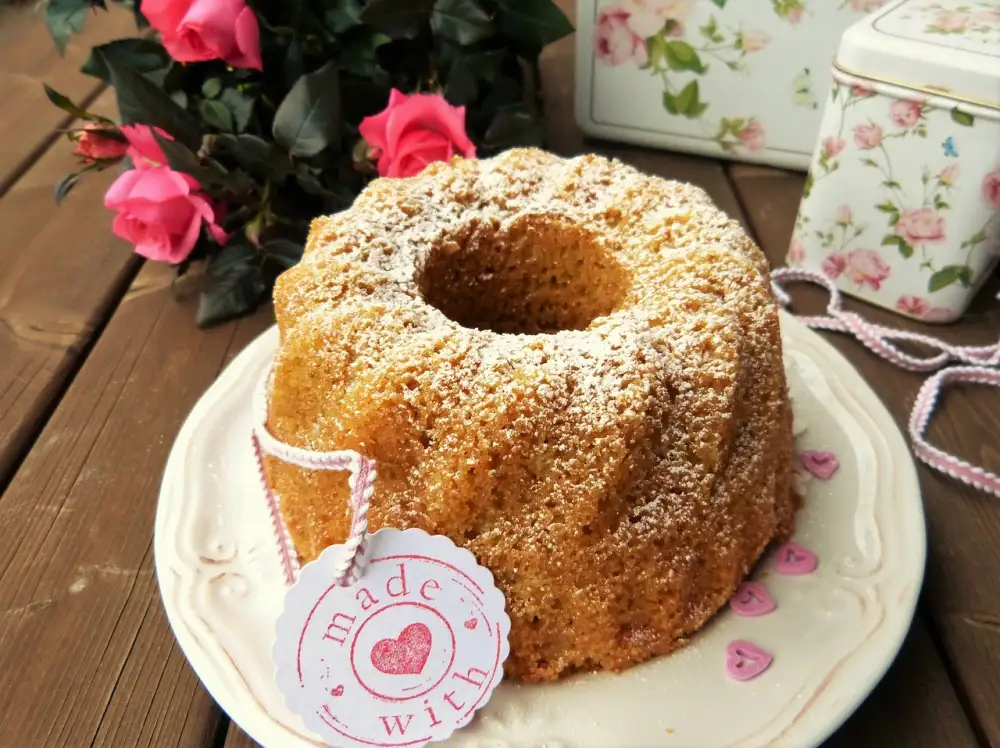Discover the Benefits of Gluten-Free Flour: A Healthier Alternative for Your Culinary Creations

In recent years, there has been a growing interest in gluten-free diets and the use of gluten-free flour as a healthier alternative. Gluten-free flour is made from grains or other ingredients that do not contain gluten, a protein found in wheat, barley, and rye. This type of flour has gained popularity among individuals with celiac disease, gluten sensitivity, or those simply looking to reduce their gluten intake. In this article, we will explore the health benefits of gluten-free flour and provide a guide to nourishing alternatives for those seeking to incorporate it into their diet.
Understanding Gluten and its Effects on Health
Gluten is a protein found in wheat, barley, and rye. For individuals with celiac disease or gluten sensitivity, consuming gluten can lead to various health issues. Celiac disease is an autoimmune disorder that damages the small intestine when gluten is ingested. This can result in malabsorption of nutrients, leading to deficiencies and other complications.
Even for those without celiac disease, gluten sensitivity can cause symptoms such as bloating, diarrhea, fatigue, and headaches. It is important to understand the effects of gluten on health in order to make informed dietary choices.
By opting for gluten-free flour alternatives, individuals with gluten sensitivity or celiac disease can avoid these negative effects on their health. Gluten-free flours are made from grains like rice, corn, quinoa, and oats that do not contain gluten. These flours provide a safe alternative for those who need to eliminate gluten from their diet.
In the next section of this article, we will explore the benefits of using gluten-free flour for individuals with gluten sensitivity or celiac disease.
What is Gluten-Free Flour?
Gluten-free flour is a type of flour that does not contain gluten, a protein found in wheat, barley, and rye. It is specially formulated for individuals with gluten intolerance or those following a gluten-free diet. Gluten-free flour can be made from a variety of grains and starches such as rice, corn, potato, tapioca, and almond. These alternative flours provide similar texture and taste to traditional wheat flour but without the harmful effects of gluten. They are versatile and can be used in a wide range of recipes including breads, cakes, cookies, and pastries.
Benefits of Using Gluten-Free Flour
Using gluten-free flour in your culinary creations comes with a multitude of benefits. Firstly, it is a healthier alternative for individuals with gluten sensitivities or celiac disease. By eliminating gluten from your diet, you can reduce digestive discomfort and improve overall gut health. Additionally, gluten-free flour is often higher in fiber and nutrients compared to traditional wheat flour, making it a nutritious choice. It can also help with weight management as it tends to be lower in calories. Moreover, using gluten-free flour opens up a world of possibilities for those looking to experiment with different flavors and textures in their recipes. So why not embrace the benefits of gluten-free flour and enhance both your health and culinary skills?
Types of Gluten-Free Flour Available
There are several types of gluten-free flour available on the market today, each with its own unique properties and benefits. Some popular options include almond flour, coconut flour, rice flour, and tapioca flour. Almond flour is made from finely ground almonds and adds a nutty flavor to baked goods. Coconut flour is made from dried coconut meat and is high in fiber. Rice flour is made from finely milled rice grains and has a mild taste. Tapioca flour, also known as tapioca starch, is derived from the cassava root and adds a light texture to recipes. These different types of gluten-free flours offer versatility in cooking and baking, allowing individuals with dietary restrictions to enjoy a wide range of delicious dishes.
Tips for Baking with Gluten-Free Flour
1. Mix different types of gluten-free flours: Combining different types of gluten-free flours, such as almond flour, tapioca flour, and rice flour, can help achieve a better texture and taste in your baked goods.
2. Use xanthan gum or guar gum: Adding a small amount of xanthan gum or guar gum to your gluten-free flour mixture can improve the elasticity and binding properties, resulting in better texture and structure.
3. Increase the liquid content: Gluten-free flours tend to absorb more liquid than regular wheat flour. To prevent dryness, increase the liquid content in your recipes by adding more water, milk, or other liquids.
4. Add extra leavening agents: Gluten-free flours may not rise as much as wheat flour. Boost the leavening power by adding extra baking powder or yeast to ensure a light and fluffy texture.
5. Let the batter rest: Allowing the batter to rest for 10-15 minutes before baking helps hydrate the flour and improves its texture.
6. Experiment with alternative binders: If you're avoiding eggs or looking for vegan options, try using alternative binders like applesauce, mashed bananas, or flaxseed meal mixed with water to help hold your baked goods together.
7. Monitor baking time and temperature: Gluten-free baked goods may require slightly longer baking times at lower temperatures compared to traditional recipes. Keep a close eye on your treats while they bake to avoid overcooking or undercooking.
8. Practice patience when cooling: Allow your gluten-free goodies to cool completely before removing them from the pan or cutting into them. This will help maintain their structure and prevent crumbling.
Remember that baking with gluten-free flour may require some trial and error as each brand and type of flour behaves differently. Don't be discouraged if your first attempts aren't perfect – practice makes perfect!
Exploring Recipes and Dishes with Gluten-Free Flour
Once you have familiarized yourself with gluten-free flour, it's time to unleash your culinary creativity. The versatility of gluten-free flour allows you to recreate your favorite dishes without compromising on taste or texture.
For baking enthusiasts, gluten-free flour can be used to make delicious cakes, cookies, and breads. Experiment with different recipes and find the perfect combination of ingredients to achieve a moist and fluffy texture.
Gluten-free flour can also be used as a thickening agent in soups, sauces, and gravies. Its neutral flavor ensures that it won't overpower the other ingredients, making it an ideal choice for enhancing the consistency of your savory dishes.
If you're a fan of pancakes or waffles, try using gluten-free flour for a healthier twist. You'll be amazed at how light and fluffy they turn out without sacrificing taste.
Don't forget about desserts! Gluten-free flour can be used to create delectable treats such as brownies, muffins, and pie crusts. Get creative with your favorite flavors and toppings to satisfy your sweet tooth.
Whether you're a seasoned chef or just starting out in the kitchen, experimenting with gluten-free flour opens up a world of possibilities. So go ahead and explore new recipes and dishes that cater to your dietary needs while still indulging in delicious flavors.
Frequently Asked Questions about Gluten-Free Flour
1. Is gluten-free flour suitable for everyone?
Yes, gluten-free flour is suitable for anyone who wants to avoid gluten or has a gluten intolerance or sensitivity.
2. Can I substitute gluten-free flour in any recipe?
Yes, you can substitute gluten-free flour in most recipes. However, it may require some adjustments in terms of liquid content and baking time.
3. Does gluten-free flour taste different?
Gluten-free flours can have a slightly different taste compared to traditional wheat flour. However, the taste varies depending on the type of flour used and the recipe.
4. Can I use gluten-free flour for bread-making?
Yes, you can use gluten-free flour for bread-making. However, it may require additional ingredients like xanthan gum or guar gum to help with the texture and rise of the bread.
5. Is gluten-free flour more expensive than regular flour?
Gluten-free flours tend to be more expensive due to the specialized production process and the use of alternative grains or ingredients.
6. Can I mix different types of gluten-free flours together?
Yes, you can mix different types of gluten-free flours together to achieve a better texture and flavor in your baked goods.
7. Are there any health benefits to using gluten-free flour?
Using gluten-free flour can provide health benefits for individuals with celiac disease or non-celiac gluten sensitivity by reducing digestive issues and improving overall well-being.
8. Can I use all-purpose gluten-free flour as a 1:1 replacement for regular all-purpose flour?
In some cases, all-purpose gluten-free flour can be used as a 1:1 replacement for regular all-purpose flour. However, it's important to check the specific instructions provided by the manufacturer.
9. Where can I find gluten-free flours?
Gluten-free flours are available in most grocery stores and specialty health food stores. They can also be purchased online for convenience.
By addressing these frequently asked questions, you'll have a better understanding of gluten-free flour and its benefits for your culinary creations.
In conclusion, embracing the health benefits of gluten-free flour can be a great choice for individuals with gluten sensitivity or those looking to reduce their gluten intake. It offers a wide range of nourishing alternatives that are not only delicious but also promote better digestion and overall well-being. By understanding the effects of gluten on our health and exploring different types of gluten-free flours, we can create delectable dishes without compromising taste or nutrition. So why not embark on this culinary journey and discover the artistry of gluten-free cooking? Your body will thank you for it!
Published: 13. 12. 2023
Category: Health



